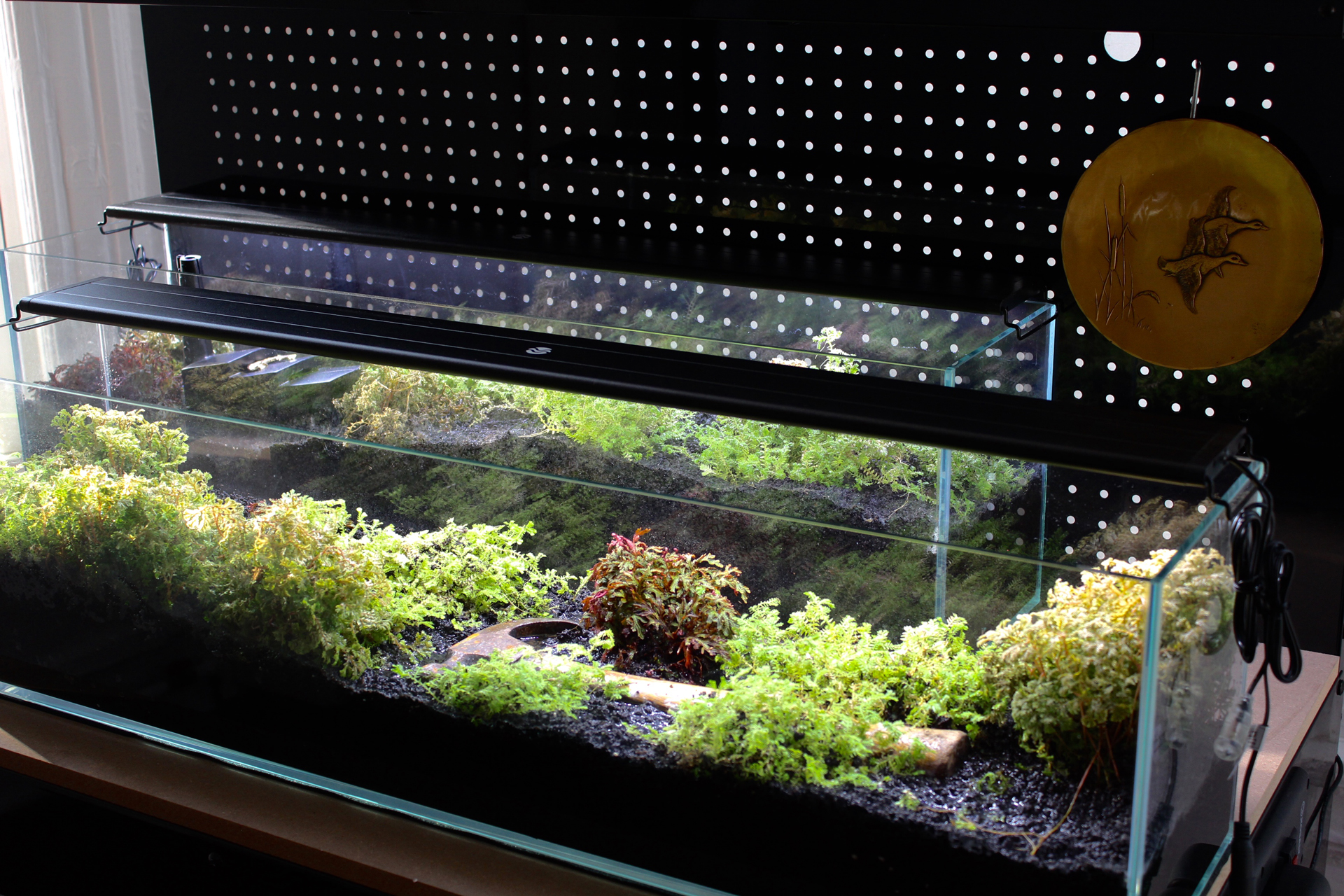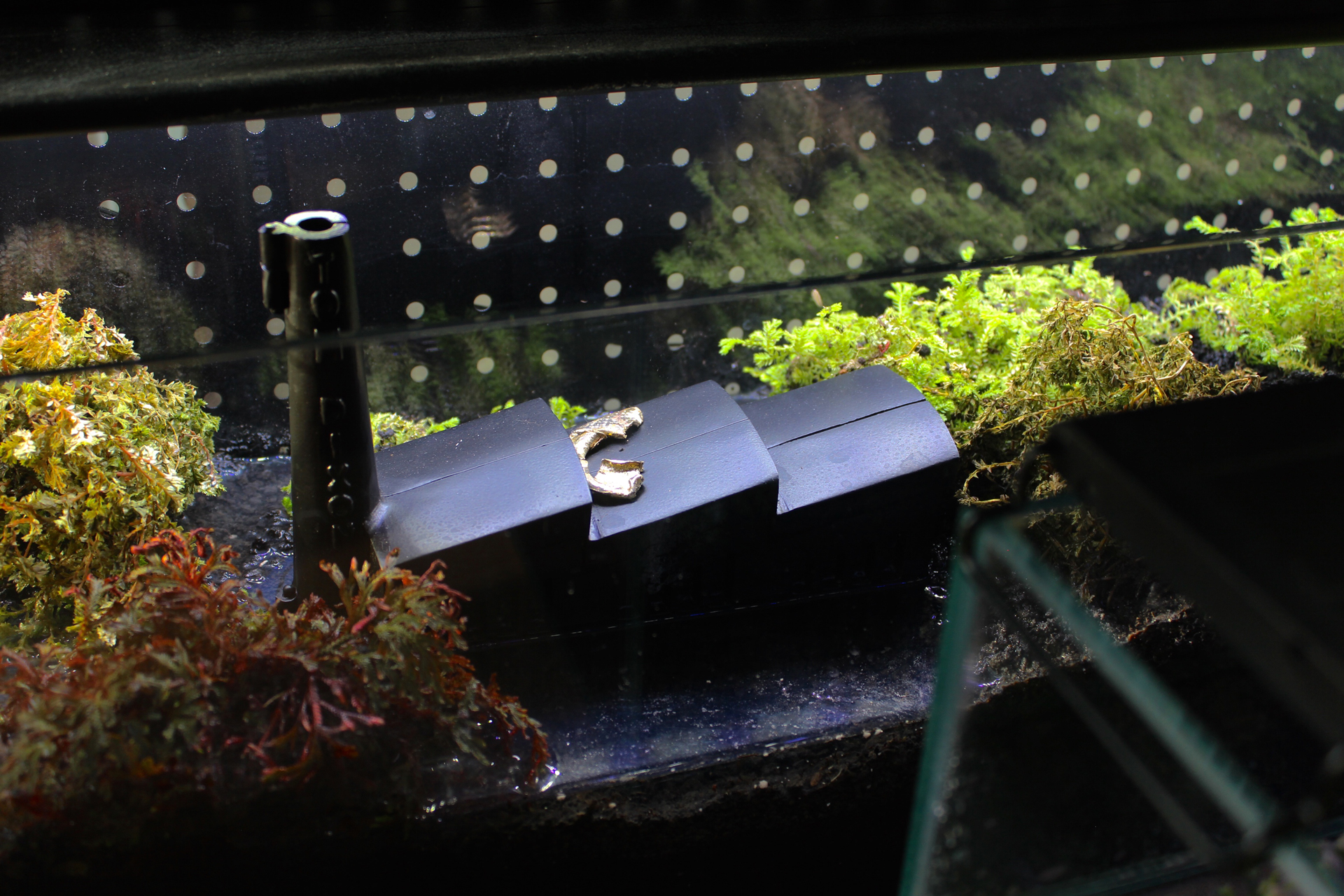A GRANDFATHER’S HAMMER IS USED TO SUFFICIENTLY FLATTEN A MICHELLE LOPEZ DESIGNED 14K GOLD-PLATED BRASS BAND-AID RING, SUCH THAT IT MAY BE DEPOSITED INTO A CAST FACTORY COIN BANK DESIGNED BY TOM DIXON. ALL OF THE ITEMS ARE PLACED UPON A WORKBENCH WITH TWO TERRARIUMS OF VARIOUS SPECIES OF LYCOPODIUM, AND A HANDMADE COMMEMORATIVE BRONZE PLAQUE FROM THE TENTH ANNIVERSARY OF THE PITTSBURGH PLATE GLASS COMPANY’S WORKS 8.
300 million years ago the equator diagonally bisected the land that is the current state of Pennsylvania. A subperiod of the larger Carboniferous Period, the period is known as the Pennsylvanian Period. In the fossil record of the time one observes various amphibians, sharks, cockroaches, long-legged flying insects, and millipedes. Reptiles were especially abundant, due in part to one of the greatest evolutionary developments of the period: the amniote egg. The development of the amniote egg allowed for these reptiles to lay eggs upon the land, and eventually gave rise to present day land reptiles and birds. During this time much of Ohio and portions of Pennsylvania were covered by a shallow sea, with a delta and marsh ecosystem similar to that of the present day Amazon. It is in these undisturbed peat swamps and marshlands that what is today known as the Allegheny Formation developed over thousands of years. The Allegheny Formation is made up of layers of coal, limestone, clay, and sandstone. It is divided into the Upper Freeport, Lower Freeport, Upper Kittanning, Middle Kittanning, Lower Kittanning, and Brookville zones of coal. Giant lycopods, and later tree ferns, made up the majority of the fauna of the rainforests of the time, and became the basis for the peat that accumulated and eventually developed into the coal that forms these zones.
In 2014 a man from Kittanning who worked his entire professional life in a glass factory died from complications associated with a myelodysplastic syndrome. In that same year The National Institute of Standards and Technology in the United States launched a new atomic clock. Called NIST-F2, it can measure time for 300 million years witout losing or gaining a second.
In the time between is a fleeting history of all the things that I’ve broken.
[WORKBENCH, TERRARIUMS, LYCOPODIUM, HAMMER, SOIL, COIN BANK, 14K GOLD RING, BRONZE PLAQUE - sculpture]
2015









